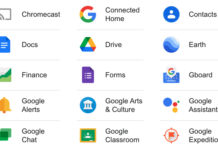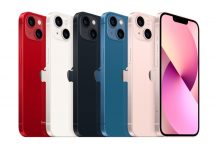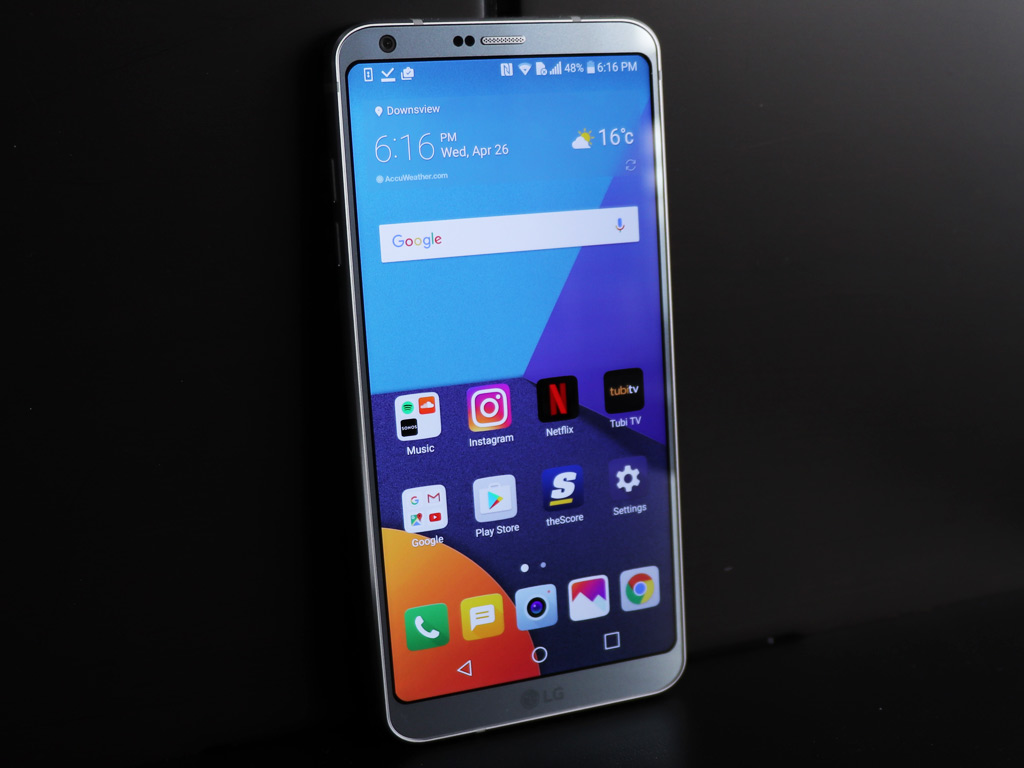
A year after launching a phone designed to shake up the market in the G5, LG has opted to be less dynamic, yet more fashionable in the G6. The company’s latest flagship handset grows a bigger screen without a massive body.
The modularity espoused by the G5 didn’t catch on, so the G6 could be perceived as a device that goes back to basics. Well, basics, in the sense that the phone is a flat slab that doesn’t have detachable components. The focus has instead shifted to the usability aspects that users may take more seriously—the screen, camera and software.
| LG G6 Display: 5.7-inch 2880 x 1440 QHD+ IPS display with 564 pixels per inch OS: Android 7.0 Nougat Processor: 2.35GHz + 1.6GHz Snapdragon 821 64-bit quad-core processor Memory: 4GB RAM, 32GB (microSD card slot expandable up to 2TB) Camera: 13-megapixel standard rear camera with additional 125-degree wide-angle lens, 5-megapixel front-facing with 100-degree wide-angle Video: Up to 4K video recording Battery: 3300mAh Connections: Wi-Fi, Bluetooth 4.2, GPS, NFC, USB 3.1, Fingerprint sensor Dimensions: 5.86 x 2.83 x 0.31 inches Weight: 163 grams Comes in black and silver |
New-look G6
LG has gone with a metal body again, particularly along the edges, while also layering glass overtop the back panel. There’s a contrast to the matte all-metal design of the G5 in that the G6 is shinier and more elegant in its appearance at any angle. Apart from the abandoned modularity, the design principles have remained.
You still have two rear camera lenses with a power button that doubles as a fingerprint sensor below it. The SIM and memory card tray is on one side, with the volume buttons on the other. The headphone jack at the top, and USB-C port and speaker at the bottom. The respective placement of these elements is exactly the same, which isn’t a bad thing.
G5 owners would recognize that, whereas others wouldn’t. Either way, the 5.7-inch display captures the eye the most anyway. Bright, vibrant and sharp, it’s easily the best screen I’ve seen on an LG smartphone. Making it longer also changes the aspect ratio to 18:9, which isn’t common. Apps aren’t developed for it, but that is changing, and the extra space could be beneficial for games and media content. The other key is responsiveness, an old bugaboo for LG phones, and one that seems to have been improved further with the G6.
Under the hood, some are maligning LG’s usage of the Snapdragon 821 processor—a chipset that was cutting edge last year. I’m not so sure the average user will lose much because of it. This is effectively the same chip that the Pixel and Pixel XL run on, among other devices, and it has held up well, in any case.
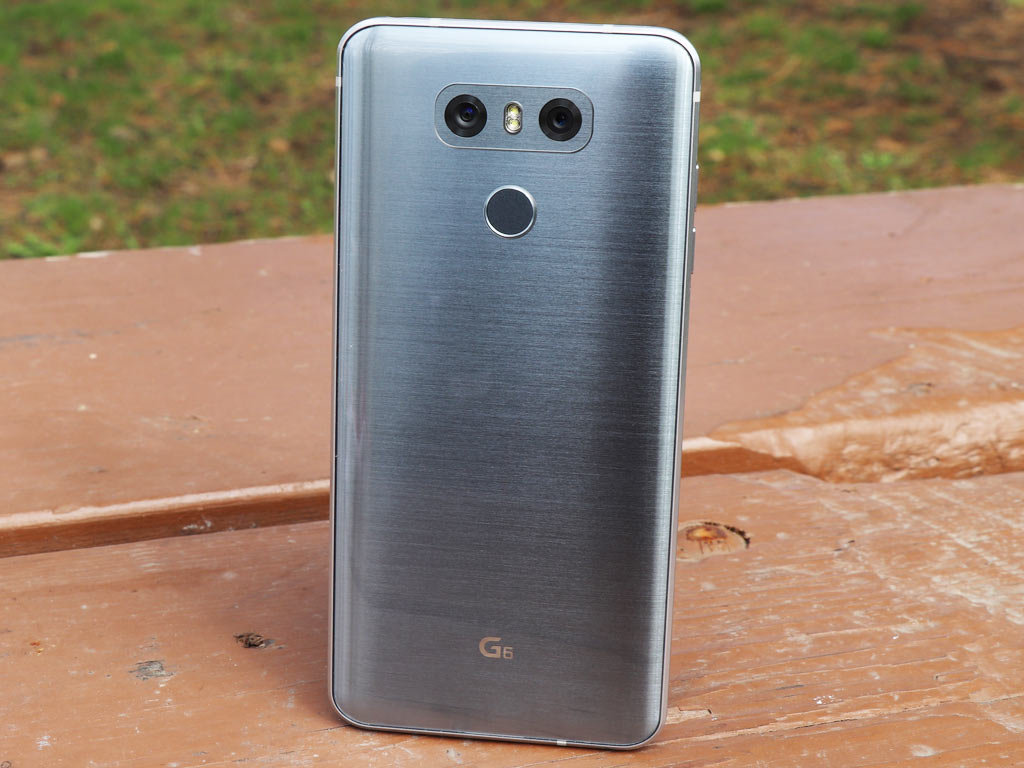
Performance and software
LG likes to play up its own user interface every time it launches a phone. The LG UX 6.0, as touted as it may be, is really addition by subtraction. The company has wisely chosen to roll back some of the previous features and left users to decide on what they want. That’s not to say it’s not obviously LG-flavoured, only that it’s not ubiquitous.
I liked the direction LG embarked on last year, and didn’t find much to complain about with the G6. The layout is pretty straightforward all around, with a decent drop-down notification shade and settings app to make adjustments. LG bundles its own apps into two folders called Essentials and Management. These can’t be entirely removed, but can be disabled, if desired. Quick Help is also a fast resource for users learning the nuances of an LG phone like this.
The Always-On display is off by default. This is the feature that constantly displays the time and notification types in plain white text on a black background when the phone screen is locked. It’s a nice feature to have, but can be a battery drainer over time. On average, I found about 1% gone for each hour.
Assessing the G6’s performance really has everything to do with the basics. Previous issues related to unresponsiveness and software glitches cast a shadow over how this phone’s consistency. While early, I can say the results are likely to be better this time around. A more restrained LG UI, coupled with improved software optimization, should deliver the kind of stability one would expect from a high-end handset.
In my testing, the G6 accorded itself well, no matter what I did. Games played smoothly, video wasn’t a problem and apps ran without any real incident. Having a longer screen is nice for viewing two apps simultaneously in Multi-Window mode. Unfortunately, many third-party apps don’t support it yet.
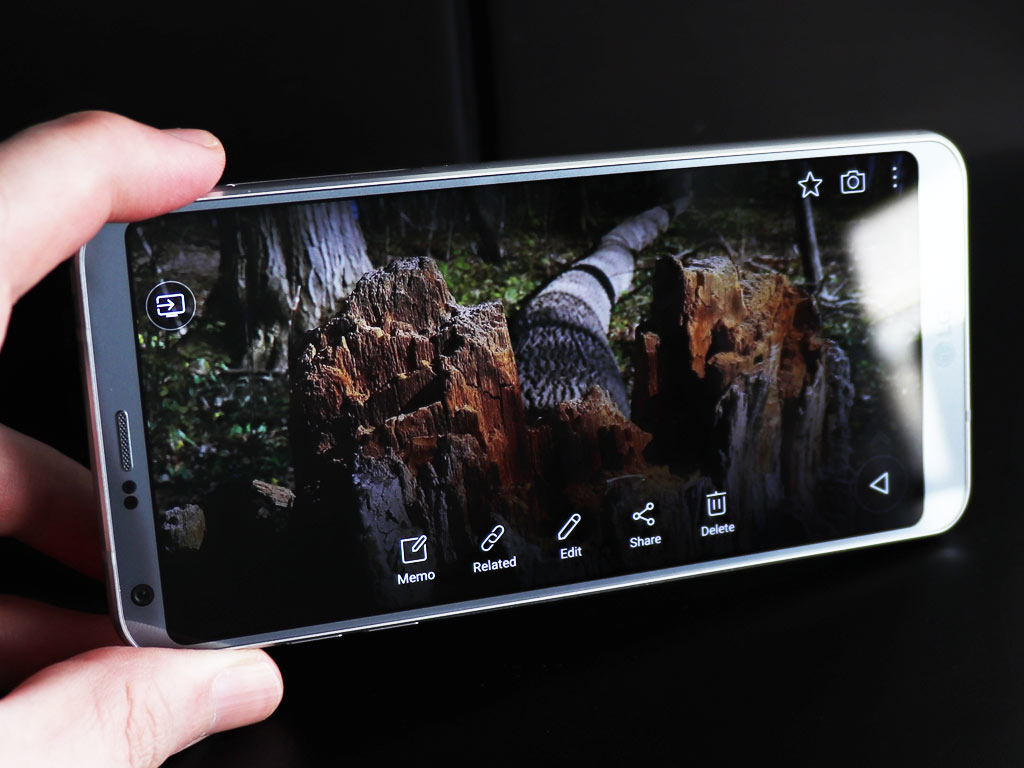
LG maintains the camera
I’ve long hailed LG’s superb handling of its camera going back to the stellar G4. Internally, little has changed from the G5, and even the G4. The image sensor, lenses and aperture are exactly the same. The two rear lenses from the G5 are back, made up of one 75-degree angle and 125-degree wide-angle. Having that option to squeeze in a much larger space with that wide-angle lens makes a real difference in certain shooting scenarios.
The secret sauce here remains the same, however. To get far better photos and video, shooting in Manual mode is the way to go. Adjusting the shutter speed and ISO can completely alter the composition for more dynamic images. Plus, the user interface LG uses for its Manual mode is still the best in the business, in my opinion. The sliders are responsive, and seeing the change in real-time helps even novice shooters visualize what works and what doesn’t.
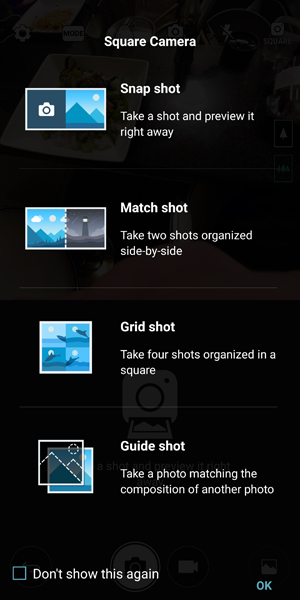 LG added a Square mode that is made for social media because it can combine multiple images in rapid succession. I can see how shooting food may be popular with this one.
LG added a Square mode that is made for social media because it can combine multiple images in rapid succession. I can see how shooting food may be popular with this one.
LG erred a little with the Auto mode in the G5, taking a step back from the G4. The G6 rights the ship back to where the G4 was, but doesn’t significantly improve it. There is a tendency to overexpose and crank up the ISO. Given that shooting in Manual can be pretty fast, I just stuck to that as my default.
Battery life
With a 3300mAh battery onboard—that is also non-removable—the G6 is a standard performer with each charge. It doesn’t overly impress, nor especially disappoint. Keeping the Always-On display off helps squeeze more juice from the battery, but the bottom line is overall battery life isn’t that much better than competing devices. It will last a full day, and perhaps even longer on very modest usage, just don’t expect marathon performance.
Final Thoughts
The beauty of the G6 is that it’s steady and doesn’t try too hard to do anything. For anyone looking for a dependable smartphone that offers solid performance, a stellar camera and vibrant screen, this phone checks those boxes.
The lack of any new killer features that may be perceived as innovative steps forward is subjective. Those who want them will lament what’s missing here. Those who don’t are unlikely to be bothered. The point is this phone looks and feels like a device in its class should. It’s not the prettiest contestant, but it is a dependable one.







